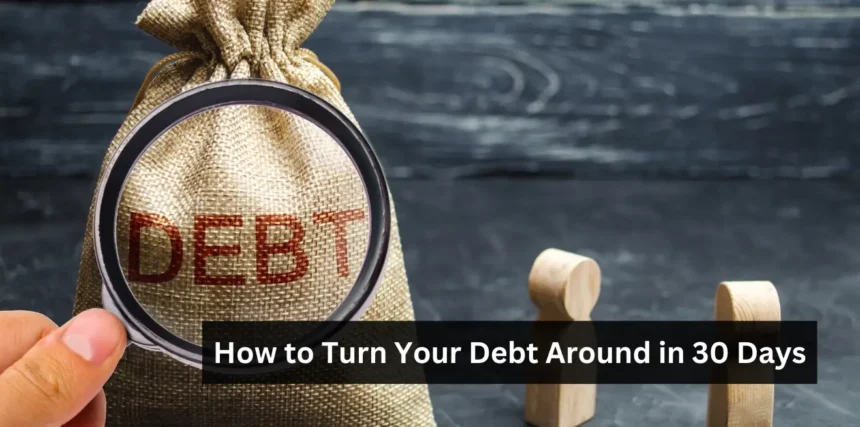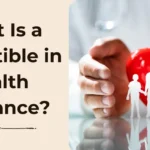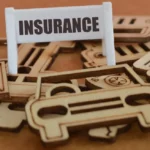In today’s fast-paced world, falling into debt is easy, but with a strategic approach on How to Turn Your Debt Around in 30 Days and a disciplined mindset, you can make significant strides toward debt reduction in just 30 days. Here’s a detailed plan to help you turn your debt around quickly.
In a world where credit is easy to come by, debt can quietly accumulate until it becomes an unmanageable burden. Understanding the true extent of your debts is the first step towards freedom. This involves not just knowing how much you owe, but also understanding the terms, interest rates, and minimum payments associated with each debt.
10 Ways to How to Turn Your Debt Around in 30 Days
Understanding Your Debt
Before you can tackle your debt, you need to understand it thoroughly. Create a detailed list of all your debts, including creditors, total amount owed, interest rates, and monthly minimum payments. This clarity is the first step toward regaining control.
Example: List all your debts including credit cards, loans, and any other obligations. For instance, if you have a credit card debt of $5,000 with an 18% interest rate, a car loan of $10,000 at 6% interest, and a personal loan of $3,000 at 10%, note these down with their respective details.
Create a Realistic Budget
Analyze your income and regular expenses to create a realistic budget. Identify non-essential spending that you can cut back on. Every dollar saved is a dollar that can be used to pay down debt. Consider using budgeting apps or tools to track your spending and stay on course.
Prioritize Your Debts
There are two popular methods for prioritizing debt repayment: the Avalanche and Snowball methods. The Avalanche method focuses on paying off high-interest debts first, while the Snowball method focuses on clearing smaller debts for psychological wins. Choose the method that best suits your situation and motivates you to continue.
- Avalanche Method:
- Description: This method focuses on paying off debts with the highest interest rates first while making minimum payments on other debts. Once the debt with the highest interest is paid off, you move on to the next highest, and so on. This method minimizes the amount of interest paid over time.
- Example: Suppose you have three debts:
- Debt A: $10,000 at 20% interest
- Debt B: $5,000 at 10% interest
- Debt C: $2,000 at 5% interest With the Avalanche Method, you would prioritize paying off Debt A first, then Debt B, and finally Debt C, while making minimum payments on the other two at each stage.
- Snowball Method:
- Description: This method involves paying off debts from smallest to largest, regardless of interest rate. Once the smallest debt is paid off, you move on to the next smallest, and so on. This method can provide quick wins and psychological motivation, as you see debts being cleared.
- Example: Using the same debts as above:
- Debt A: $10,000 at 20% interest
- Debt B: $5,000 at 10% interest
- Debt C: $2,000 at 5% interest With the Snowball Method, you would first pay off Debt C, then Debt B, and finally Debt A, while making minimum payments on the others at each stage.
Choosing Between the Two:
- Avalanche Method is generally more efficient financially as it saves you the most in interest charges. It’s best for those who are more disciplined and motivated by overall savings.
- Snowball Method can be more motivating for some people because it provides the psychological win of paying off an entire debt faster. It’s best for those who need quick results to stay motivated.
Negotiate with Creditors
Reach out to your creditors to negotiate better terms, such as lower interest rates or extended payment plans. Many creditors are willing to work with you to ensure they get paid. This step can reduce your monthly payments or the total interest paid over time.
Consolidation and Balance Transfers
Consider consolidating multiple debts into a single loan with a lower interest rate. Alternatively, use balance transfer offers to move high-interest debt to a credit card with a 0% introductory rate. Be mindful of transfer fees and the regular rate after the introductory period ends.
Boost Your Income
Find ways to increase your income. Consider freelancing, selling items you no longer need, or taking on a part-time job. Direct any additional income straight to your debt.
Build a Mini Emergency Fund
While aggressively paying down debt, set aside a small emergency fund to avoid new debt in case of unexpected expenses. Even a small fund can prevent you from falling back into debt due to unforeseen circumstances.
Track Your Progress
Keep a visual representation of your debt and update it as you pay down each balance. Tracking your progress provides motivation and a sense of accomplishment, encouraging you to keep going.
Seek Professional Help
If you’re overwhelmed, consider seeking advice from a credit counselling service. They can provide valuable guidance and may help negotiate with creditors on your behalf.
Preventing Future Debt
Once you’ve started to turn your debt around, it’s crucial to avoid falling back into old habits. Continue to live within your means, save money, and make informed financial decisions. Regularly review your budget and adjust as needed to ensure you’re living a balanced and debt-free life.
Conclusion
Turning your debt around in 30 days is a challenging but achievable goal. It requires a clear understanding of your debts, a realistic budget, strategic planning, and a lot of discipline. By following this plan, you can make significant progress toward freeing yourself from the burden of debt and moving towards a more secure financial future. Remember, the journey to becoming debt-free is a marathon, not a sprint, but these steps can give you a strong start.
Frequently Asked Questions (FAQs):
Q1: Is it really possible to turn my debt around in just 30 days?
Yes, it’s possible to make significant progress toward turning your debt around in 30 days. While you might not be able to eliminate all your debt in that timeframe, you can develop a solid plan, negotiate with creditors, and change your spending habits to put yourself on the right path.
Q2: What is the first step I should take to start paying off my debt?
The first step is to understand your total debt. List all your debts, including the creditor, total amount owed, interest rate, and minimum monthly payment. This will give you a clear picture of what you’re facing and help you prioritize which debts to tackle first.
Q3: Should I focus on paying off small debts first or the ones with the highest interest?
It depends on what motivates you. The Snowball method (paying off small debts first) can provide quick wins and motivate you to keep going. The Avalanche method (focusing on high-interest debts) may save you more in interest over time. Choose the strategy that you think will best keep you on track.
Q4: How can I negotiate with creditors?
Contact your creditors directly and explain your financial situation. Ask if they can lower your interest rate or extend your payment period. Many creditors are willing to work with you to ensure they get paid. Be honest, polite, and prepared to discuss your finances in detail.
Q5: Is debt consolidation a good idea?
Debt consolidation can be a good strategy if it lowers your overall interest rate and simplifies your payments. However, it’s not a one-size-fits-all solution. Consider the fees involved, the new interest rate, and the repayment terms before making a decision.
Q6: How can I increase my income quickly to pay off debt?
Consider selling items you no longer need, taking on freelance work, or getting a part-time job. Any extra income can be directed straight to your debt, accelerating your payoff plan.
Q7: How much should I save for an emergency fund while paying off debt?
Aim to save at least $500 to $1,000 for unexpected expenses. This can prevent you from going further into debt if an emergency arises. Once you’re out of debt, you can focus on building a larger emergency fund.
Q8: What should I do if I feel overwhelmed by my debt?
If you’re feeling overwhelmed, consider seeking help from a nonprofit credit counseling organization. They can provide guidance, help you develop a budget, and potentially negotiate with creditors on your behalf.
Q9: How can I prevent falling back into debt?
Continue to live within your means, create and stick to a budget, save money regularly, and avoid using credit for unnecessary purchases. Regularly review your financial plan and adjust as necessary to stay on track.
Q10: Can improving my credit score help with my debt situation?
Yes, improving your credit score can help you qualify for lower interest rates, which can make your debt more manageable. Pay your bills on time, reduce your credit utilization, and check your credit report regularly for errors to improve your score.








